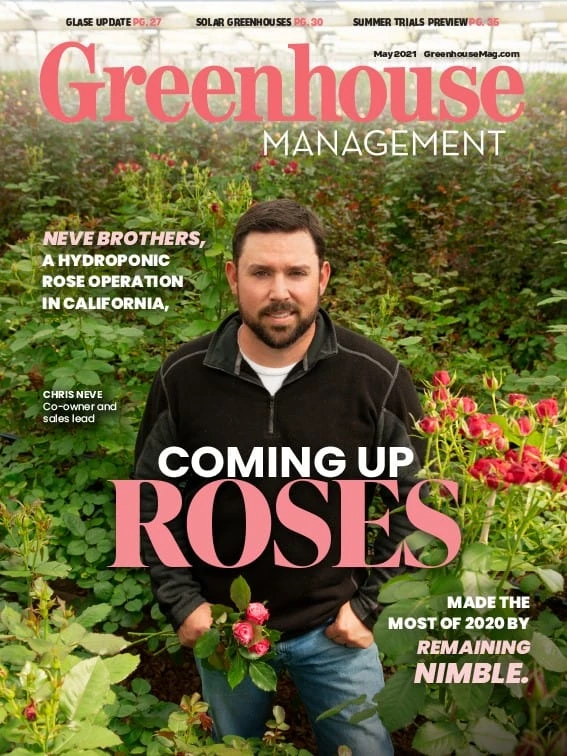
Greenhouse Management: Can hemp growers utilize mycorrhizae, and if so, which strains should they be using?
Blair Busenbark: First of all, I think hemp growers have been using mycorrhizae for many years. It is important that hemp growers use endo-mycorrhizae strains because they are endo plants.
Scott Inman: Hemp and other plants in that genus utilize arbuscular mycorrhizal fungi, which are a very generalist mycorrhizae. They colonize over 80% of the world’s plants, and there are roughly 400 identified isolates. One associates with a lot of different plants, but it’s also driven by environment, plant type and soil type, as well as the conditions under which the microbes develop. The plant is the driver of this relationship. It’s a true symbiotic relationship so the plant is the one turning on and off the mycorrhizae. That’s a key component of this association for growers to keep in mind.

GM: What benefits do most hemp plants receive from mycorrhizal fungi?
SI: It depends on the conditions. If you look at the different hemp growing segments and what those growers are doing, the big one is nutrient availability. A lot of nutrients are tied up in the soil and require some level of microbial activity. And it’s also a stress mitigation — it allows the plants to have better access to water and nutrients to help mitigate stress.
BB: I would add that it is important to realize that the stresses the crops can undergo themselves are different. It will experience different stressors whether the crop is grown in Texas or Kentucky or even in New York State. And so, the plant is driving what benefits it is getting from the mycorrhizae, and then you throw on top of that the different production protocols and variables — how they are irrigating, how they are fertigating and all the different varieties — you throw all those variables together and really the overall benefit is that it helps the plant be more successful in a wider variety of situations.
GM: What are some tips for growers in how they can incorporate mycorrhizae into their production system?
BB: When you look at how hemp is produced for the high CBD markets, most of those crops are being started in greenhouses and then transplanted outdoors. All of those crops can have a drench as well as a soil incorporation to add the mycorrhizae, that’s a simple way to do it. And then keep in mind that mycorrhizae only need to be applied once during the production cycle, so if you apply it during propagation it will stay with the plant through transplant, and it will continue to benefit the plant throughout its life cycle.

Explore the May 2021 Issue
Check out more from this issue and find your next story to read.
Latest from Greenhouse Management
- CEA Alliance celebrates bipartisan introduction of Supporting Innovation in Agriculture Act
- Dümmen Orange North America celebrating 25th anniversary in 2025
- Illinois Landscape Contractors Association changes name to Landscape Illinois
- 2025 Proven Winners Horticulture Scholarship applications now open
- ICL’s Gemini Granular herbicide now registered for use in California
- Eurazeo Planetary Boundaries Fund acquires Bioline AgroSciences
- Spring Meadow Nursery's Freedom Shelley finds joy in plants
- Leading Women of Horticulture: Dana Massey, Plantworks Nursery






